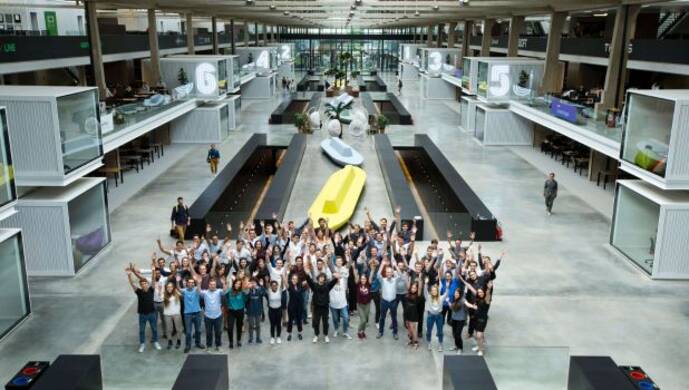Policymakers and venture capitalists in both mature and emerging economies have heavily invested in entrepreneurship support, under the assumption that it can be learned. They believe that advanced training in things like business model design and team management will ultimately boost the startup and innovation ecosystem.
But as economies lurch from one crisis to another and money markets contract, calls for more evidence of impact grow louder. All the support for incubators, innovation hubs, networking platforms, management training and consultants—is this money well spent? And more poignantly, does the training really help or can the success be pinned on other factors?
We discovered that the impact of training entrepreneurs was more than twice as high on the average sales growth.
Together with colleagues involved in entrepreneurship and innovation-related fields in Singapore, we explored these fundamental questions. Working with up-and-coming entrepreneurs, we discovered that ventures led by those who received training reported average sales growth of 72.5% compared to 30.3% for those with no exposure to the training tools and modules. So, the impact was more than twice as high.
Even more remarkable, we found that ventures led by entrepreneurs who had not only received training but also clearly stated ambitious growth expectations observed a roughly 100% increase in sales compared to 10% in our study control group.
The main drivers behind entrepreneurial success
These results came as a pleasant surprise to all of us because research had been ambivalent on this point until now. We had expected to see ‘some’ training-fueled growth in our sample of 181 entrepreneurs, but the improvements we observed were unequivocal.
Our study helped us to delineate the main drivers behind these intervention outcomes. First, the training and tools clearly boosted sales growth in ventures run by entrepreneurs with well-demonstrated ambitions pinned to clear targets. And second, the training was more likely to benefit opportunity-seeking entrepreneurs mostly in mature markets.
Why is this the case? Our analysis suggests that our more successful entrepreneurs made the connection between their goals—to run a successful business—and a nominally ascribed (largely internal) value they placed on the experience. They knew what they wanted, had a fair idea of what was needed, and then set out to do it with honed skills, focus and drive thanks to the training.
We saw this especially in the business model canvassing part of the program. We discounted the fact that their initial drive may have influenced these results—all the tools in the world only help if the individual using them is motivated to seek them out to start with. We also observed that having high-growth goals is not a 100% guarantee of success either. Indeed, channeling large sums into insincere, poorly defined or unaligned growth goals could prove very wasteful.
US marketing pioneer John Wanamaker articulated it thus back in the late 19th century: “Half the money I spend on advertising is wasted; the trouble is I don’t know which half.” There’s no shortage of funds out there for the next good idea, especially one with a positive impact on society or the environment. But when financial markets are under strain, and the rising tide is no longer lifting all ships equally, picking winners can’t be left to chance.
By using robust training tools and frameworks, you give ‘your’ ships more buoyancy than the rest. Thanks to our findings, we can now confidently say that this is true when applied the right way.
The promises of innovation
Fast-growing new ventures founded by opportunity-seeking entrepreneurs benefit society because they create new jobs. Schumpeter’s groundbreaking writings in the 1930s—amid the Great Depression—confirmed that innovation boosts economic prosperity. Just look at how innovative steam engine technology transformed industry, enabling mass production and revolutionizing transportation. Today’s equivalent is the way companies use digital tools to design, build and sell innovative goods and services, opening up new markets and business models.
Promoting innovation through training schemes not only enriches the knowledge and skills of the entrepreneur and business owner, but also their employees who benefit from more insightful management and working practices. Responsive innovation can also help businesses anticipate market changes and establish a strong lead in promising new areas, helping a startup differentiate itself from the competition.
How we got there: lectures and individualized coaching
To investigate opportunity-based entrepreneurship in a mature market economy, we focused on training a sample of Singapore-based entrepreneurs using three growth-catalyst tools— business-model innovation, team structuring, and effective networking. We studied our learners’ progress under randomly controlled trial conditions.
We supplemented regular classroom-based workshops and interactive lectures with individualized coaching, where the entrepreneurs applied the tools to specific challenges they faced. Issues raised ranged from the more obvious ‘access to funding in critical growth stages’ and ‘overcoming conservative attitudes to entrepreneurship’ to ‘leveraging atypical networking opportunities’.
As part of our study, we broadened out the training content beyond the traditional finance and marketing curriculum; we also compared insights from both emerging and mature economies. All combined, we have helped to reconcile the mixed evidence to date on the beneficial effects of training.
We believe this is one of the first impact-focused studies to examine how training in strategy and organization can help entrepreneurs grow their ventures tangibly.
We believe this is one of the first impact-focused studies to examine how training in strategy and organization can help entrepreneurs grow their ventures tangibly. We hope our work encourages new research on entrepreneur training to inform policymakers, especially in mature market economies where opportunity-based entrepreneurship is a key driver of economic growth.







